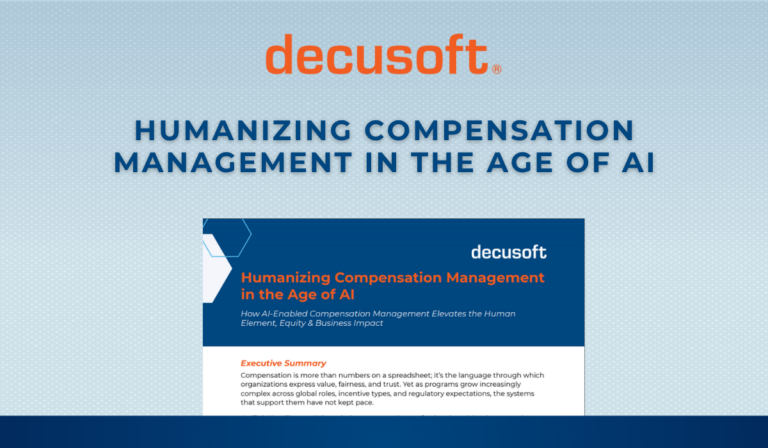I was recently interviewed and asked what trends and factors I see in the marketplace for compensation programs and how technology can support the same. Despite data suggesting some companies attempting to simplify comp plans, I often see the opposite and an increase in variable pay components as part of the total rewards package. Organizations are using comprehensive compensation as a strategy for creating environments that reward employees and establish a strong ethos of employee engagement. This trend brings with it an increased demand for flexibility in compensation systems. It is not uncommon for companies today to have bonus plans with a large number of plan designs, calculations, and components; We support one client who has 82 bonus plans with over eight components in each!
Another interesting trend is the increase in frequency by which companies are accessing their compensation systems. Traditionally, there were a select few users utilizing their system 1x/2x per year – typically only during their comp cycles. Now, managers, finance personnel and general HR Business Practitioners are all increasingly utilizing their comp systems for strategic purposes – often resulting in year-round usage.
The top 4 trends we notice include:
1. Globalization: In a global economy, many companies will have employees in multiple countries. The comp function must understand the ways that pay practices differ around the world and put programs/processes in place that enable the company to effectively compete for talent. Enabling technologies need to either have these market practice built in or be customizable enough to support them (Language/Currency). Otherwise, the comp team is left with manual interventions and/or workarounds. A significant challenge that large multinational companies struggle with greatly is how to adapt to the needs of a local country when there’s only one team that supports a global system and needs to be able to administer programs centrally.
2. Mergers & Acquisitions: Many companies have a business strategy that includes
growth through strategic acquisitions. The comp function would certainly lead integration and harmonization activities. Depending on the size and impact of these combinations, it could take months or years to move to common pay programs and HRIS systems. The compensation function is often asked to manage a common annual merit process before systems are even combined. This is kind of like Changing an Airplane’s Engine While Flying! This requires enabling technologies that can handle different approaches for different groups of employees.
3. Predictive Analysis/Modeling: As systems get smarter and capture more information, leaders are looking to the compensation function to provide more than just basic analytics. A comp professional needs to be analyzing data year-round and recommending course corrections. For example, if too many market adjustments are happening during the year, identify it early and put greater controls on it. But beyond just policing what managers and HR are doing, the comp team needs to be trying to predict what will happen. In addition, companies are looking to better understand how certain pieces of information like time in position, time with the company, position in range, performance rating, potential rating, manager, recognition awards, etc. and use that information to predict things like retention risk so they can become more proactive in identifying potential problem areas as opposed to being reactive.
4. Pay Equity is also an ever-increasing topic when it comes to predictive analysis and balancing internal equity with external competitions. For example, some companies are looking at ways they can analyze in more real time offers made to new hires to identify whether they’re seeing trends of women or minorities being offered starting salaries that are less than say their male counterparts. Since in many cases, pay inequity stems from what people are offered when they walk in the door, this type of proactive approach will better enable companies to ensure their employees are being paid fairly, ultimately resulting in less turnover and the ability to attract top talent.
Transparency in earnings is also growing in importance, leading to a large increase in demand for additional reporting functionality and customized total reward statements per employee.
In summary, Comprehensive compensation management programs are an integral part of attracting and retaining the right employees that will help your organization reach its corporate goals. Utilizing the right technology will help you implement these programs, giving you a competitive advantage and ensuring your continued success.
Bob Laurenzo
CEO, Decusoft




